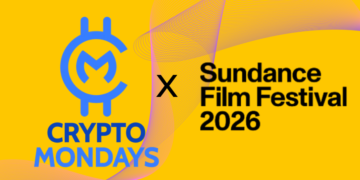In the world of sports, technology is becoming a transformative force, enhancing athlete performance, fan engagement, and overall operational efficiency for teams and leagues. As the global Sports Technology Market continues to evolve, it has captured the attention of industry leaders, investors, and fans alike. With innovations across wearables, software solutions, and sports equipment, the market has shown remarkable growth potential. The industry, valued at US$ 18.36 billion in 2021, is expected to reach US$ 65.64 billion by the end of 2031, driven by a strong compound annual growth rate (CAGR) of 14.0% from 2022 to 2031. This in-depth exploration covers key components, sports segments, market dynamics, recent developments, trends, challenges, opportunities, and regional growth prospects that are shaping the sports technology landscape.
Get Your Sample Now – https://www.transparencymarketresearch.com/sample/sample.php?flag=S&rep_id=29237
Market Trends
Several prominent trends are shaping the sports technology market, such as the increasing demand for player performance analytics, the rise of smart stadiums, and the growing emphasis on injury prevention. Performance analytics allows coaches and trainers to monitor athletes’ progress, identify weaknesses, and tailor training regimes accordingly. Meanwhile, smart stadiums equipped with Wi-Fi, IoT sensors, and facial recognition technology are enhancing fan experiences and stadium security. Injury prevention technology, including wearables and predictive analytics software, is helping to minimize athlete downtime, improve recovery protocols, and extend career longevity. These trends demonstrate how technology is reshaping every aspect of sports, from the playing field to the fan experience.
Key Components in the Sports Technology Market
Wearable Devices & Sports Equipment
Wearable technology and advanced sports equipment have revolutionized how athletes monitor and enhance their performance. Wearable devices such as fitness trackers, smartwatches, heart rate monitors, and smart clothing are increasingly popular among professional athletes and fitness enthusiasts. These devices provide real-time data on metrics such as heart rate, distance covered, calories burned, and more, empowering athletes to make data-driven decisions about their training and recovery. Advanced sports equipment embedded with sensors can track player movements and even provide personalized feedback, further fueling the demand for sports technology. With a growing focus on precision and safety, wearables and smart equipment are anticipated to remain pivotal segments in the sports technology market.
Software
The software segment plays an equally crucial role in the sports technology ecosystem, encompassing applications for performance analytics, team management, fan engagement, ticketing, and even virtual coaching. Performance analytics software allows teams to track, evaluate, and optimize their gameplay strategies, helping them maintain a competitive edge. Furthermore, fan engagement platforms and apps are enhancing how sports organizations interact with their audiences, offering personalized experiences, live game statistics, and even immersive virtual experiences. With the rise of artificial intelligence (AI) and machine learning (ML), software solutions are set to become more advanced, driving new opportunities in areas like predictive analytics and injury prevention.
Services
The services component of the sports technology market includes consulting, installation, maintenance, and support services. As teams and organizations adopt new technologies, they often require specialized support for seamless integration, system upgrades, and user training. In a competitive sports environment where real-time performance data and analytics are critical, reliable service providers play an essential role in ensuring smooth operations. Service providers that offer end-to-end solutions, from initial setup to ongoing support, are likely to see growing demand as more sports entities embrace technological innovation.
Sports Segments Benefiting from Technology
The adoption of sports technology spans a diverse array of sports, including baseball, basketball, cricket, cycling, football, golf, rugby, and many others. Each sport has unique requirements and benefits from specific types of technology:
• Football and Basketball: With fast-paced action and a large number of players, football and basketball teams are leveraging wearable devices, tracking systems, and advanced analytics to monitor player performance and game strategies.
• Golf and Cricket: These sports are incorporating technologies such as swing analysis and ball-tracking systems to enhance performance precision and improve the spectator experience.
• Cycling: Cyclists benefit from wearables that track endurance metrics like heart rate variability and cadence, helping them optimize training programs and enhance their physical capabilities.
By segmenting sports and tailoring technology accordingly, the sports technology market is witnessing growing adoption across professional leagues, amateur teams, and individual athletes around the world.
Get exclusive access to this comprehensive market analysis today: https://www.transparencymarketresearch.com/sports-technology-market.html
Market Dynamics
Recent Developments
The sports technology market has seen rapid advancements in recent years, with breakthroughs in AI, virtual reality (VR), and wearable sensor technologies. These innovations are enhancing not only how athletes train but also how fans experience the game. VR and augmented reality (AR) applications are being used to create immersive viewing experiences for fans, bringing them closer to the action than ever before. Meanwhile, AI-powered platforms are enabling sports organizations to make smarter data-driven decisions in real time. The rise of eSports has further accelerated technological adoption, with the line between traditional sports and digital sports becoming increasingly blurred.
Market Challenges
Despite its promising growth, the sports technology market faces a number of challenges. One of the primary concerns is data privacy and security, as wearable devices and analytics software gather a wealth of sensitive data on athletes and fans. Protecting this information from cyber threats is crucial for maintaining trust and compliance with data protection regulations. Another challenge is high implementation costs, as many sports technologies require substantial initial investments, which can be a barrier for smaller sports organizations. Additionally, the fast-paced nature of technological advancement can make it challenging for teams to keep their systems up to date, potentially leading to compatibility and functionality issues.
Market Opportunities
The sports technology market is ripe with opportunities, particularly in emerging fields like AI-driven analytics, immersive fan engagement, and eSports. As AI and ML algorithms become more sophisticated, sports organizations have an opportunity to leverage predictive insights for everything from game strategy to injury prevention. Furthermore, as fan engagement shifts towards digital platforms, organizations can capitalize on AR and VR technologies to create personalized, immersive experiences for remote audiences. The eSports industry, with its global reach and tech-savvy fan base, presents additional avenues for growth, enabling sports technology companies to diversify their portfolios and tap into new revenue streams.
Regional Analysis
Regionally, North America remains a dominant market for sports technology, driven by the high adoption of advanced technologies in sports leagues like the NFL, NBA, and MLB. North American sports organizations are known for their willingness to invest in cutting-edge solutions to maintain a competitive edge and offer premier fan experiences. Europe is also a significant player, with increasing investment in soccer and rugby technology and a strong emphasis on fan engagement initiatives. Meanwhile, Asia-Pacific is experiencing rapid growth due to rising interest in cricket, badminton, and eSports. With a large, sports-loving population and growing economies, countries like China, India, and Japan are seeing increased investments in sports technology, positioning the region as a future leader in the global market.
Key Players in the Sports Technology Market
The sports technology market features a mix of tech giants and specialized sports technology companies that are continually pushing the boundaries of innovation. Notable companies include Apple Inc., Catapult Sports, Cisco Systems, Inc., HCL Technologies Limited, IBM Corporation, Infosys Limited, Modern Times Group (MTG), Oracle, Panasonic Corporation, SAP SE, Sony Corporation, and Stats LLC. These companies are leading the way in wearable devices, performance analytics, fan engagement software, and more. By leveraging strategic partnerships, investing in R&D, and expanding their market reach, these industry leaders are well-positioned to capitalize on the growing demand for sports technology.
Click Here to Purchase this Comprehensive Insights Report @: https://www.transparencymarketresearch.com/checkout.php?rep_id=29237<ype=S
More Trending Reports-
Anti-piracy Protection Market: https://www.transparencymarketresearch.com/antipiracy-protection-market.html
Online Project Management Software Market: https://www.transparencymarketresearch.com/online-project-management-software-market.html
About Us Transparency Market Research
Transparency Market Research, a global market research company registered at Wilmington, Delaware, United States, provides custom research and consulting services. The firm scrutinizes factors shaping the dynamics of demand in various markets. The insights and perspectives on the markets evaluate opportunities in various segments. The opportunities in the segments based on source, application, demographics, sales channel, and end-use are analysed, which will determine growth in the markets over the next decade.
Our exclusive blend of quantitative forecasting and trends analysis provides forward-looking insights for thousands of decision-makers, made possible by experienced teams of Analysts, Researchers, and Consultants. The proprietary data sources and various tools & techniques we use always reflect the latest trends and information. With a broad research and analysis capability, Transparency Market Research employs rigorous primary and secondary research techniques in all of its business reports.
Contact Us:
Transparency Market Research Inc.
CORPORATE HEADQUARTER DOWNTOWN,
1000 N. West Street,
Suite 1200, Wilmington, Delaware 19801 USA
Tel: +1-518-618-1030
USA – Canada Toll Free: 866-552-3453
Website: https://www.transparencymarketresearch.com
Email: sales@transparencymarketresearch.com
This release was published on openPR.
















